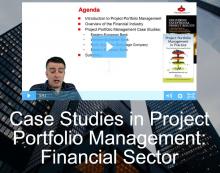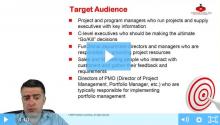Article - Your Ultimate Guide to Earned Value Management
Submitted by Jamal Moustafaev on Fri, 08/25/2017 - 15:03
In my previous article “How to Explain Earned Value to Dummies” I touched upon the subject of Earned Value and how to explain it in a simple way. The post since went viral on LinkedIn generating several thousand hits. One of my followers expressed her desire to see someone (i.e. yours truly) describe the entire domain of EVM in a similar fashion. So, here you go!
Inputs:
- You have to dig a trench by extracting 1,000 cubic meters of sand.
- The duration of the project is 10 days (assume no initiation, planning or close-out stages, only execution)
- Your budget is $5,000
- You therefore believe that you should be digging 100m3/day and spending $500/day in order to finish this project on-time and on-budget.
As a result of these assumptions, you do the following (see Table 1):
- Populate the “Scheduled Work” row with ten “100 m3/day figures
- Populate the “Cumulative Work” row with incrementally increasing corresponding numbers (i.e. 100 m3/day, 200 m3/day, 300 m3/day, etc.)
- Populate the “Budget” row with $500/day figures
- Populate the “Cumulative Budget” row with incrementally increasing corresponding numbers (i.e. $500/day, $1,000/day, $1,500/day, etc.)
- Finally, the “Planned Progress” numbers are equal to the “Cumulative Work” for that particular day divided by total work planned (i.e. 1,000 m3).
Table 1
Now imagine that we are at the end of Day 5. Let us pretend that you extracted 10, 50, 70, 120 and 150 m3 on days 1-5 respectively, instead of a planned pace of 100m3/day (see “Actual Work Done” and “Cumulative Work Done” rows)
Imagine also that you also spent $500, $750, $520, $800 and $900 days 1-5 respectively, instead of a planned pace of 500$/day (see “Actual Spent” and “Cumulative Spent” rows).








